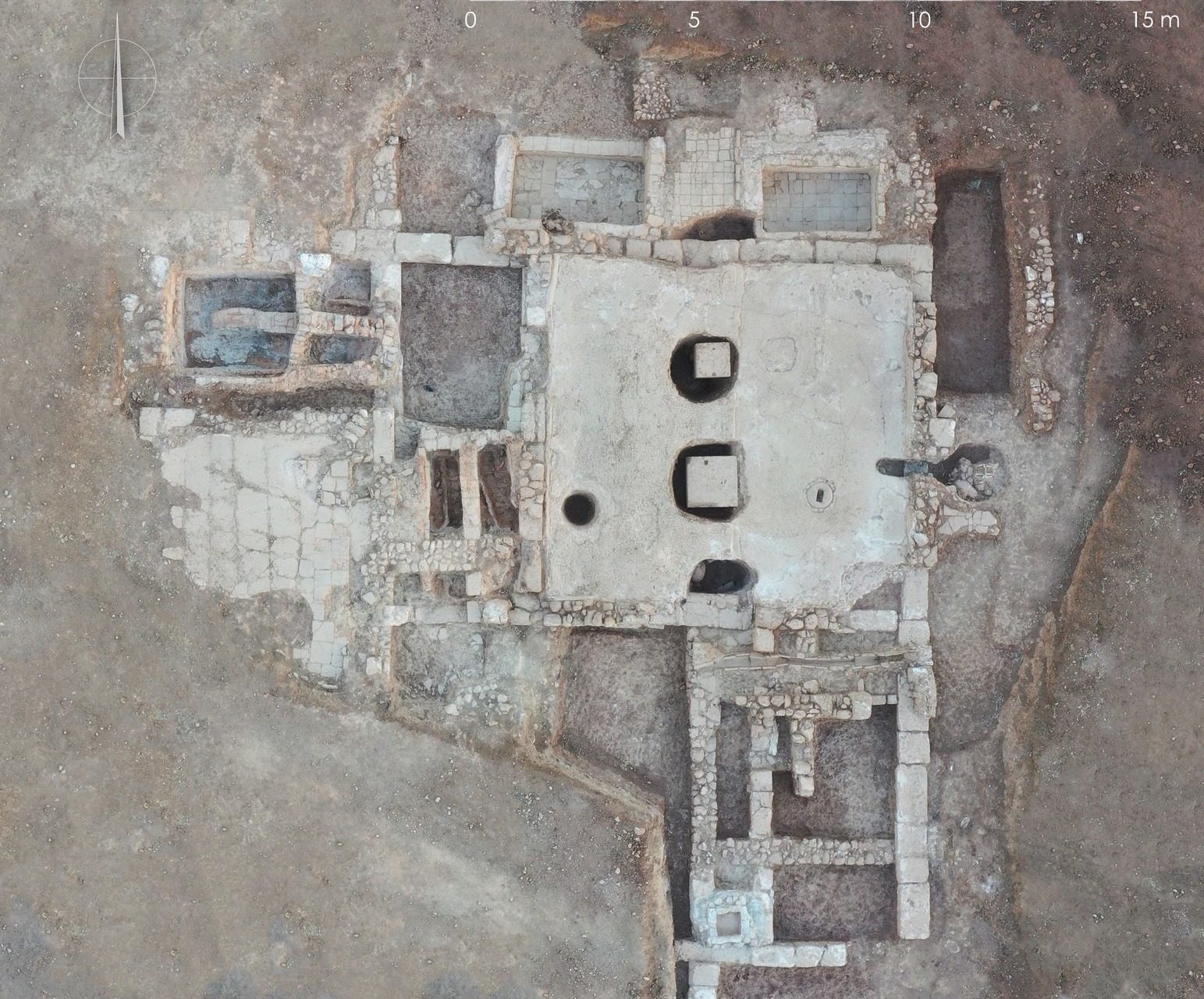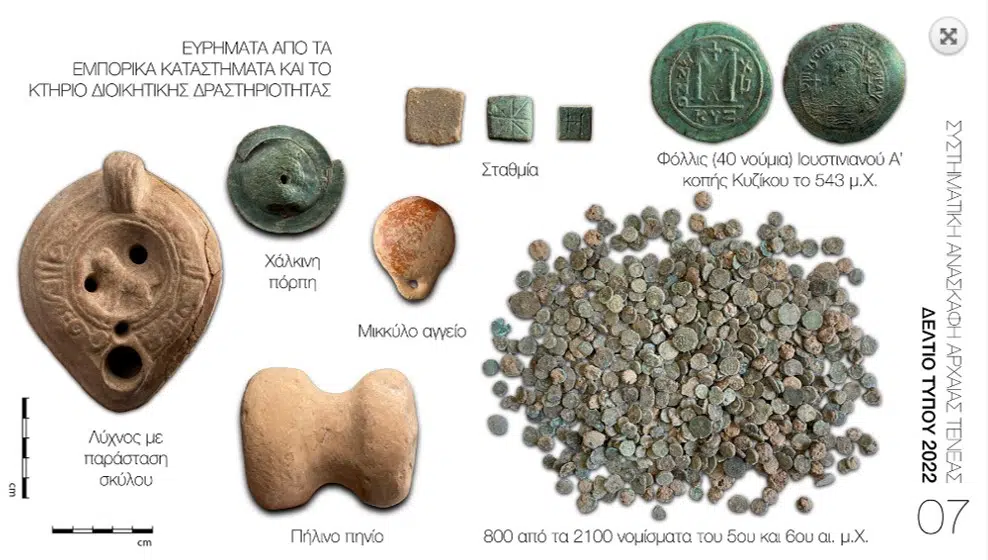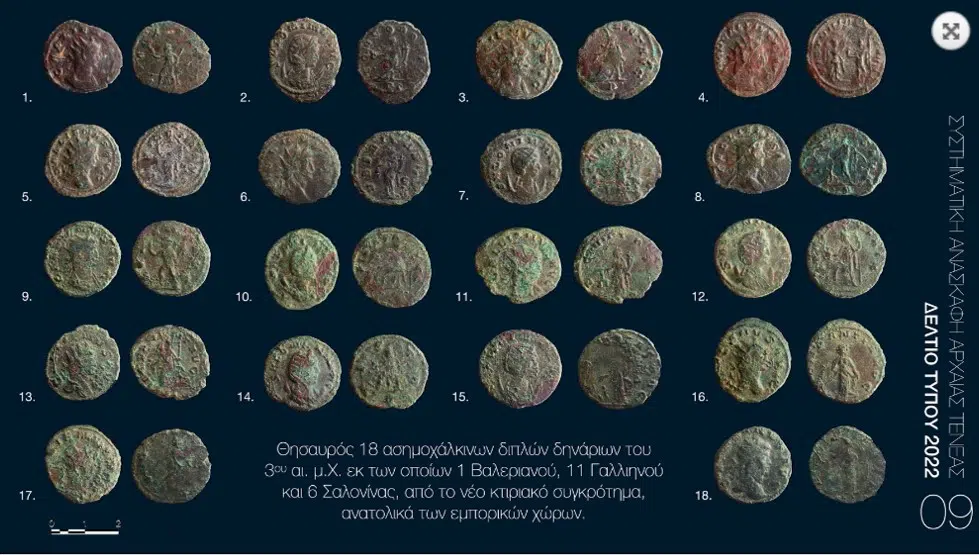
The Ancient Greek settlement area of Tenea was discovered for the first time during recent excavations, the Greek Ministry of Culture reported on Friday. Tenea was an ancient Greek town near Corinth, approximately 80 kilometers southwest of Athens.
Archaeologists discovered several ruins at the excavation site, including shops, burial monuments, and a strong rampart wall. Most of the finds appear to date back to the city’s Roman period.
According to some sources, the inhabitants of Tenea identified themselves as descendants of the Trojans and/or captives brought back by Agamemnon from Tenedos.
Excavation
The excavations were led by Dr. Elena Korkas and implemented by the Directorate of Prehistoric and Classical Antiquities of the Ministry of Culture and Sports. The archaeological study was conducted on a site in Chiliomodi within the municipality of Corinth.
Several structures were discovered by the archaeologists including smaller finds, such as figurines and coins, most of which are of the Roman period. The defensive wall, which would have surrounded the settlement, might be older.
⚒️Αποτελέσματα της Συστηματικής Αρχαιολογικής Έρευνας στην Αρχαία Τενέα Χιλιομοδίου Κορινθίας
❗️Εντοπίστηκε για πρώτη φορά η περιοχή εγκατάστασης της πόλης των κλασικών χρόνων της αρχαίας Τενέας.
🔗https://t.co/MTpBQqdRDU#MinCultureGr #Κόρινθος #ανασκαφή #Τενέα pic.twitter.com/YGe3jQQY9Y
— Υπουργείο Πολιτισμού και Αθλητισμού (@cultureGR) January 20, 2023
Shops, public buildings, defensive ramparts, a bathhouse, an olive mill, and an above-ground burial monument were all discovered at Tenea. In one structure, built with particularly strong masonry, “a treasure of eighteen silver and copper coins of the 3rd century was found inside a room.”
There were approximately 2,100 coins dating back to the fifth and sixth centuries AD among the items. Coinage is from the reigns of the Roman and Eastern Roman/Byzantine emperors Theodosius, Marcian, Leo I, Zeno, Anastasius, Justin I, and Justinian I.
Among the older findings were “a significant number of miniature vases, lamps, as well as figurines depicting deities, sympathizers, birds, horses, and other animals” from the Archaic and Classical periods of Ancient Greece. Coins of the fourth century BC were also discovered, including a Corinthian drachma and a half-drachma.

Ancient Tenea
According to the ancient Greek geographer Pausanias, who lived in the second century AD, Tenea was situated between Corinth and Mycenae, just sixty stadia (about 9.4 km or 5.8 miles) from the former.
“The inhabitants say that they are Trojans who were taken prisoners in Tenedos by the Greeks, and were permitted by Agamemnon to dwell in their present home,” wrote Pausanias in his Description of Greece.
Pausanias also claimed that the Teneans were particularly fervent worshippers of the god Apollo. In the Iliad, Apollo favors the Trojan side and causes a great plague to ravage the Greek side. Pausanias cites the Teneans’ supposed Trojan lineage as their reason for revering the powerful Olympian deity.
In Greek mythology, Tenea is where the tragic hero and Theban king, Oedipus, was said to have spent his childhood.
In the second century BC, Tenea was left unscathed during the ravaging of the region by the Roman General Lucius Mummius Achaicus. In 146 BC, nearby Corinth was completely destroyed after the Corinthians were defeated in battle by the Romans.
According to Strabo in Geographica, Tenea was left unharmed because its inhabitants aided the Romans. Under the Pax Romana, Tenea continued to thrive, as evidenced by the recently discovered items, which suggests the settlement was wealthy well into the Byzantine period.

See all the latest news from Greece and the world at Greekreporter.com. Contact our newsroom to report an update or send your story, photos and videos. Follow GR on Google News and subscribe here to our daily email!



